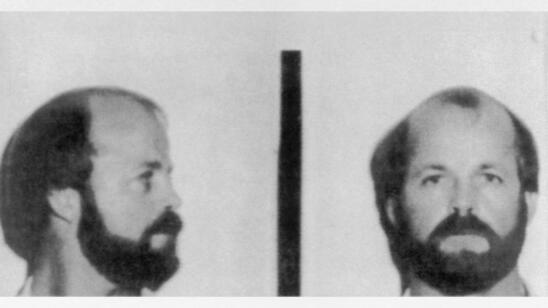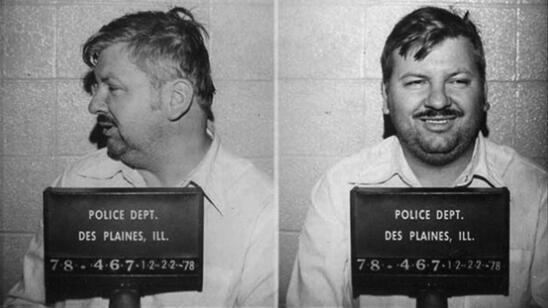Warning: The following contains disturbing descriptions of violence. Reader discretion is advised.
Before his arrest in March of 1978, John Wayne Gacy seemed—to outsiders—to be a well-adjusted adult. He ran a successful construction business, earning more than $250,000 per year. On days off, he would volunteer as a clown (“Pogo the Clown” or “Patches the Clown”), cheering up children at orphanages and hospitals. And he was involved in local politics. He became a Democratic precinct captain and at times hosted large neighborhood barbecues at his Chicago ranch-style home.
But unbeknownst to Gacy’s guests, as they ate spare ribs and discussed electoral strategy, they were standing near the corpses of dozens of boys and young men, nearly all of whom were buried underneath and around Gacy’s house.
Richard Rappaport, who served as the chief psychiatrist for John Wayne Gacy’s defense, says that everyone who knew Gacy was aghast when they heard about his crimes—binding, torturing, raping and ultimately killing 33 victims, some as young as 15 years old. (The remains of 29 of the victims were found on his property.)
“They were all shocked,” Rappaport tells A&E True Crime. “Nobody seemed to know. The only thing that was any kind of warning was the smell coming from the house: the odor of decay.”
But while Gacy might have hidden his sadistic streak in adulthood, his monstrous behavior didn’t suddenly appear. Serial killers typically become infamous overnight, but their homicidal behavior is often decades in the making.
[Stream Invisible Monsters: Serial Killers in America, about Gacy, Jeffrey Dahmer and other serial killers, in the A&E app.]
John Wayne Gacy and His Father
John Wayne Gacy was born into an upper-middle-class family in Chicago in March 1942. His father, John Stanley Gacy, was an auto-repair machinist who named his son after John Wayne, a Hollywood icon who starred in Westerns and was considered a paragon of American masculinity.
But in his father’s eyes, John Wayne Gacy never came close to living up to his namesake. He was overweight and unathletic. He would dress in his mother’s underwear, Rappaport says, and “depended on his mother for any nurturing he could get.”
John Stanley, by contrast, was the punitive parent: he drank heavily and often demeaned his son, calling him a “sissy.” These humiliations and abuses often took place in the basement, where John Wayne was berated for his clumsy attempts at helping his father on home improvement projects. At times, John Stanley even beat John Wayne, or his mother.
After Gacy’s arrest, his mother told police that if her husband had known that John Wayne had had sex with men, he would have killed him. But in an interview with CBS John Wayne said that he loved his father—despite all the abuse John Stanley dished out.
[Watch Monster in My Family: Killer Clown: John Wayne Gacy on A&E Crime Central.]
“My dad was domineering,” Gacy explained. “My dad drank a lot, and when he drank a lot, he was abusive to my mother and to me… but I never swung at my dad, because I loved him for what he stood for.”
But Christopher Berry-Dee, a criminologist and author whose book Born Killers focuses on the childhood of serial killers, says that Gacy’s upbringing is far too unremarkable to explain the crimes he committed.
Berry-Dee tells A&E True Crime that millions of kids get beaten from time to time, “but that doesn’t make them serial killers,” he says. “You have three children who suffered the same abuse, but only one turned out to be the rotten apple.”
Scattered Sexual Abuse in John Wayne Gacy’s Early Years
While John Wayne denied having suffered any sexual abuse at the hands of his father, he claimed to be the victim of several non-consensual sexual assaults in his childhood.
The first incident, according to Gacy, occurred when he was 5 years old. While with his mother was at another family’s home, a 15-year-old girl brought Gacy upstairs into her room, where she began fondling him. After the two mothers discovered the children together, the girl’s mother struck her in front of Gacy.
When he was 8 years old, Gacy says he was again fondled and assaulted—this time by a contractor in his mid-thirties who had struck up a casual friendship with Gacy’s father. The contractor would take Gacy out for ice cream, and then show him “wrestling holds.” After a few such incidents, young Gacy told his father that he didn’t wish to be alone with the contractor and their contact ended.
The Abused Becomes Abuser
According to Rappaport, who spent 65 hours interviewing Gacy, the trauma of his father’s abuse was central to Gacy’s mental and emotional dysfunction.
“The relationship that went on between the two of them was the forerunner for the relationship he had to his victims,” Rappaport says.
Gacy ultimately buried his victims in the crawl space beneath his home—a location in his house that recalls the basement where he’d suffered physical abuse as a child.
Before he killed his victims, he would handcuff them, reveal his plans to hurt them and then make them beg for their lives.
“He was putting on a scenario that reenacted the way he felt as a child,” Rappaport says. “He was essentially getting them to play his role, of being helpless…while he played the role of the father. And he’d punish them for begging him, and for looking like cowards—whatever he felt about his own inadequacies, he put on them.”
Few Warning Signs of John Wayne Gacy’s Future Behavior
Many serial killers, in their early years, exhibit a series of warning signs. Three in particular—bed-wetting, fire-setting and the torture of small animals—are considered the “Macdonald Triad,” based on a series of 1963 studies by psychiatrist J.M. Macdonald. According to Rappaport, Gacy exhibited none of those behaviors.
“I spent a full year [before evaluating him] studying the literature, trying to understand how a guy who seemed so normal could be so abnormal in this one respect,” Rappaport says.
Until his death by lethal injection in 1994, John Wayne—now often referred to as the “Killer Clown”— maintained his innocence. His initial confession, he claimed, was fabricated by the police—and anybody could have been murdering young victims and burying them under his house.
Gacy claimed there was no motive for him to murder so many strangers.
“Why would I want to kill these boys, anyway?” he asked one reporter. “I’m not their father.”
Related Features:
John Wayne Gacy, Jeffrey Dahmer and Others: Ranking Serial Killers on a Scale of Evil
The Blue-Collar Jobs of Serial Killers
The ‘Kayak Killer’ and Other Criminals Who Capitalized on Their Crimes


